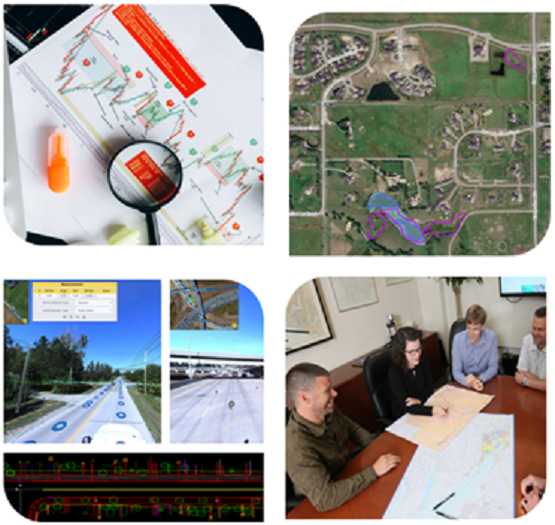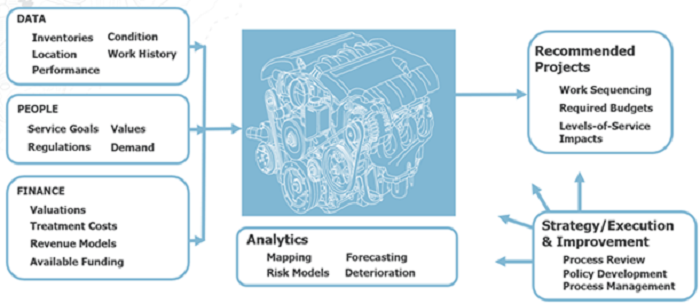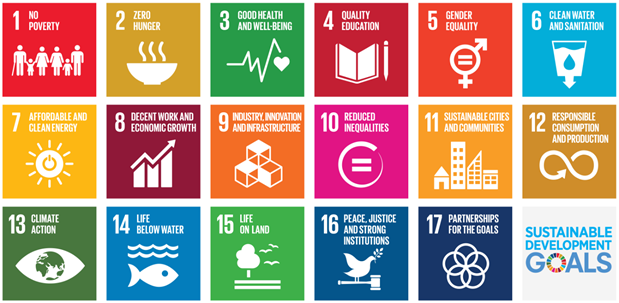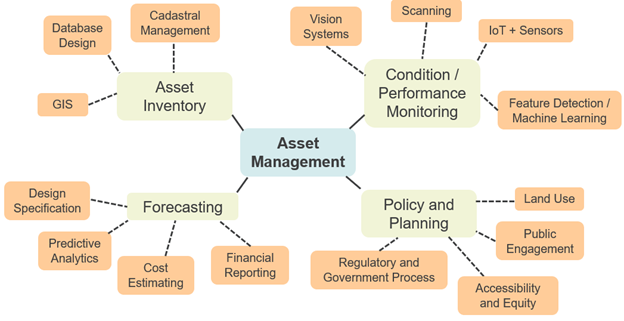June 23, 2021
Infrastructure Asset Management for Sustainable Development

What’s better for a given neighborhood long-term – paved back alleys or gravel ones?
Given the risks associated with wildfires, where should we concentrate our vegetation clearing efforts on a nation-wide power transmission grid?
What are the current conditions of our roads, and how much should we be budgeting to keep them in a reasonable state 10 years from now?
These are just some of the questions that the practice of Infrastructure Asset Management (IAM) seeks to answer and interested students can get a taste of what this multi-disciplinary field has to offer in an upcoming Fall 2021 course entitled “Fundamentals of Infrastructure Asset Management and Sustainability” (ENGO 699).

What is Infrastructure Asset Management?
Essentially, the whole point of IAM is to allow organizations to optimize the total life cycle cost of acquiring, operating, and disposing of infrastructure assets such as roads, water systems and industrial facilities which are needed to provide services to end-users. To accomplish this, the key questions that need to be answered are:
- What assets exist?
- What are they worth?
- What are the physical properties of the assets such as location, age, and construction material?
- What is the current condition of the assets?
- How much longer are the assets expected to last for?
- How do they degrade over time? What happens if they fail?
When this data is combined with information on anticipated demand and user trends, risk associated with asset failure and level-of-service requirements, an Asset Management practitioner creates a ‘recommendation engine’ that can guide future infrastructure investment planning and prioritize potential projects.

Why is it relevant right now?
Societies are becoming increasingly aware that there is under-investment in critical infrastructure, while at the same time recognizing that the development of new infrastructure should be done though a lens of sustainability and inter-generational equity. We can’t keep building new things today without thinking about how future generations will have to pay to upkeep them under potentially very different circumstances!
Fortunately, IAM principles promise to improve accountability, transparency, and efficiency when it comes to stretching available investment dollars and allocating them appropriately. In fact, the United Nations estimates that up over 90 percent of its “2030 Sustainable Development Goals” are tied to appropriate infrastructure development and is actively creating tools and handbooks to support governments around the world in establishing robust IAM systems.

On the national level, municipal governments are increasingly required to have IAM systems in place if they wish to access federal infrastructure development funding. To support this, the Federal Government recently sponsored an 8-year, $110 million program (administered through the Federation of Canadian Municipalities) aimed at increasing the capacity of municipal governments to develop these systems.
Additionally, technological developments are also converging to fuel the development of IAM systems. For example, a proliferation of embedded sensors, scanners and imagers allow for a massive amount of asset usage and condition information to be collected, often via an “Internet of Things”. At the same time, advances in data analytics and visualization allow the creation of “Digital Twins”, or virtual, digitized representations of reality that can be studied to see how real-world assets will behave under hypothetical future funding and maintenance scenarios. Research in machine learning, geographic information systems and sensor fusion are fundamental to these advances.
Finally, an international standard in how Asset Management systems should be constructed (the ISO 55000 series) was initially released as recently as 2014 and is currently under active revision and development including the development of new standards relating to AM competency evaluation for example. Canadian AM practitioners are active members of the various ISO 55000 sub-groups, including representation from the University of Calgary (Dr. Robert Radovanovic). The further development of international standards in this practice area is a promising sign, as they provide a level of consistency for the industry when developing systems, software, and consultant services.
Who ‘does’ Infrastructure Asset Management?
IAM is an intrinsically multi-disciplinary practice, since it requires a combination of technical infrastructure engineers, planners, measurement specialists, data scientists and policy developers as well as economic forecasters and financial managers. Since much of the underlying data involved has a geospatial component, geomatics engineers often play various roles throughout the AM process.
Interestingly, the United Nations’ Handbook on Infrastructure Asset Management emphases the importance of land as a fundamental asset and encourages the establishment of well-defined rights in land as a starting point to subsequent infrastructure development. Historically, Land Surveyors and other geomatics professionals have led international initiatives in establishing land tenure and cadastral mapping systems, so it seems appropriate that they continue to contribute to efforts to develop IAM systems both in Canada and abroad.

How is the Department of Geomatics Engineering supporting IAM capacity building?
Right now, most educational opportunities in IAM are provided as professional-level courses and seminars put on by various Asset Management industry groups. Outside of traditional reliability engineering and plant maintenance streams, there are relatively little university-level educational opportunities for students interested in IAM.
Recognizing this, as well as the growing demand for qualified infrastructure asset management practitioners to support broader sustainable infrastructure development, the Department of Geomatics has started developing courses to provide graduate and undergraduate students with exposure to this field. With an end-goal of supporting a graduate certificate in Infrastructure Asset Management, the Department is beginning its efforts in IAM competency building through the creation of a “Fundamentals of Asset Management and Sustainability” course which will be provided in the Fall 2021 semester.
This initial course will be available to graduate students and approved undergraduates seeking a technical elective and will introduce AM topics including:
- How infrastructure assets support service delivery and how level-of-service requirements are established, including risk assessment and climate resiliency considerations.
- Development of asset inventories, registers, and valuations.
- Establishment of condition assessment programs, including techniques for assessing asset conditions and performance.
- Basics for capital financial modelling and reporting
- Effective stakeholder consultation and public consultation techniques.
- Introduction to sustainability and how sustainability measures can be quantified via frameworks such as Envision and LEED.
To date, the details of the course have been discussed with groups such as the Association of Ontario Land Surveyors to Infrastructure Asset Management Alberta, and the course has garnered significant interest and support from industry. This course will feature industry guest speakers to bring a ‘real world’ aspect to the theory of Asset Management, as well as including interactive workshops and scenario building.

Even more excitingly, these efforts dovetail into broader efforts to highlight sustainability-focused education and research at the University of Calgary, from the availability of receiving a Certificate in Sustainability Studies (through the School of Architecture, Planning and Landscape) to the innovative work being done through the Integrated Infrastructure for Sustainable Cities Program. Whatever your interest in helping build resilient, sustainable communities of the future, you can be sure there are opportunities at the University that fit your studies!
